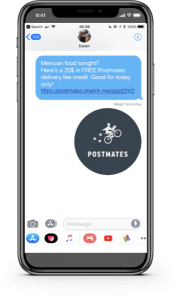
Challenges that face SaaS companies
By golly, you’ve got it! You’ve created a great SaaS product. But does that mean you’re set up to be disruptively SaaS-y? Not by a long shot.
Software as a Service (SaaS) has caused a great deal of hullabaloo in the past years which has led to some innovative businesses, but also some stiff competition with the marketing technology landscape pointing to around 2,000 SaaS vendors to compete with and distinguish yourself from. This is double the number of vendors in 2014 and is only projected to continue to rise.
Besides SaaS having reduced onboarding time, low entry costs, and the ability to integrate and scale the technology, the motivation behind the rush toward SaaS are the inspirational success stories of businesses like Uber and Dropbox.
The success of these two SaaS business were based off their ability to bypass the three main challenges SaaS businesses face after launch:
- Customer Acquisition
- High Churn Rates
- Continued Customer Growth
But how were they able to do this you ask? By capitalizing on their customer’s experience, or in other words, by using the power of customer referrals.
Uber’s referral program
To begin with, Uber has a great service that at the time of its launch only had the potential to be a disruptive force. But consumers and businesses alike can be wary of new products. This is why Uber acquired their first customers through sponsorship of events by providing free rides to attendees with the intention of capitalizing on the happy customer’s experience.
After that, a great deal of Uber’s success came by word of mouth from satisfied customers. With this as the driving force of Uber, they were able to:
- Obtain high customer acquisitions by capitalizing on the trust of already formed relationships
- Avoid high churn rates by obtaining quality customers from referrals
- Spread the word and grow their business quickly and inexpensively
Uber understood that the success of a service or product to not primarily dependent on its superiority, but the amount of market shares you can amass the fastest. Word of mouth referrals allowed Uber to win the race against other SaaS vendors and put their competition in a difficult position to succeed.
Of course, this was even before SaaS companies had the option of developing customer referral programs like Amplifinity.
Now imagine if Uber had referral marketing automation software that allowed them to have optimized their referral process when starting out. With studies now showing that:
- 83% of happy customers are ready to refer but only 29% actually do
Uber would have had even greater startup results than only using word of mouth. Currently, they have developed their own in-house referral program.
5 referral marketing automation features that will improve on Uber’s Results
Uber is an amazing success story. But word of mouth referrals has its pros and cons.
Pros:
- Low cost
- Increase credibility
Cons:
- Lack of control
- Extremely difficult to evaluate results
However, Gartner points out that developing customer referral programs that are automated still grants you decreased lead cost but with a, “High volume of excellent low cost leads.” In fact, Amplifinity’s SaaS customers have seen an average conversion of referrals leads to purchase of 37%.
Below are 5 exciting features that highlight the benefits of developing SaaS customer referral programs with automation compared to word of mouth marketing.
- Automated rewards – Automated reward fulfillment combined with the options of reward choice, and tiered and multi-stage automated reward distribution, allows for easy reward obtainment and seamless advocate nurturing. This increases engagement during a long sales process.
- Full program transparency – Provide your advocates with their own account that tracks a referral’s progress to completion and allows advocates to have full transparency to keep them up to date and engaged in the process.
- Attribution – If you can’t attribute every referral to an advocate you’ll have leaks in your sales pipeline and unhappy customers. Attribution software allows every referral to be attributed to an advocate to incentivize the advocate and continue to engage them in the referral process for a greater customer lifetime value.
- Empowerment tools – By offering advocates the opportunity to share referrals with their contacts through engagement options such as, personal URLs, social media, email, and offline you can allow customers to easily advocate for your business in a way that works for them.
- Sales enablement – Sales enablement tools ensure that your sales team is highly productive and successful by allowing them to quickly qualify a lead, engage advocates, track an advocate’s progress, and recruit advocates.
Learn more about how developing customer referral programs can help you become disruptively SaaS-y, and before you know it you’ll be looking at your referral automation program’s ROI and hear yourself saying, “Oh no it didn’t.”
Business & Finance Articles on Business 2 Community
(140)







